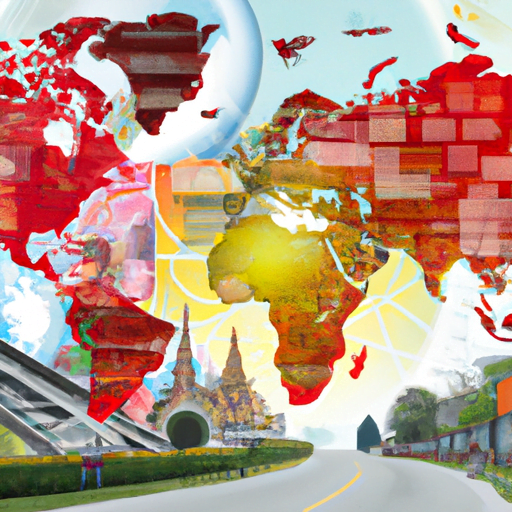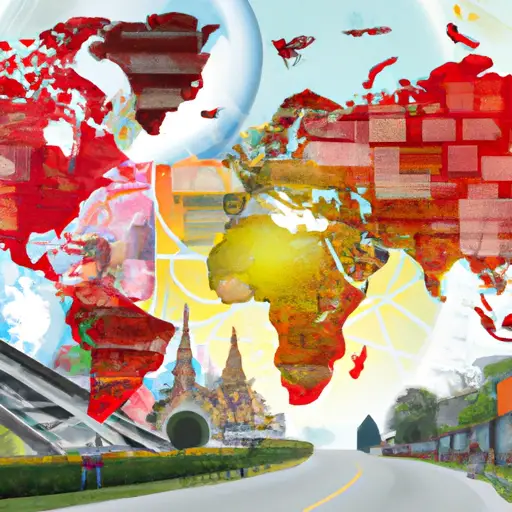So, have you ever wondered what it would be like to live in a city that’s not only smart but also eco-friendly? A place where technology and sustainability come together to create a better future? Well, let me tell you, it’s a fascinating concept. In this article, we’re going to explore the concept of a smart eco-city in detail, and trust me, you’re in for a treat.
A smart eco-city is essentially a city that utilizes technology and innovative solutions to promote sustainability and improve the quality of life for its residents. It’s all about integrating smart infrastructure, renewable energy sources, efficient transportation systems, and green spaces into urban planning. Imagine a city where buildings generate their own energy, public transportation is electric, and waste is managed in a sustainable way. Sounds pretty amazing, right?
But that’s not all. In a smart eco-city, residents have access to real-time data on energy consumption, air quality, and waste management, allowing them to make more informed choices about their daily lives. It’s about creating a livable, resilient, and environmentally friendly urban environment. In this article, we’ll delve deeper into the key components of a smart eco-city and explore some real-life examples from around the world. So, if you’re curious about how cities of the future will look like, keep reading because there’s a lot more to discover. A smart eco-city is a term used to describe a city that prioritizes sustainability, technology, and innovation in its urban development. It aims to create a livable and environmentally-friendly community through the integration of smart infrastructure, renewable energy sources, data and analytics, citizen engagement, environmental conservation, and smart governance. By implementing these concepts, smart eco-cities strive to provide a high quality of life for its residents while minimizing their ecological footprint.
Sustainable urban planning is a key component of smart eco-cities. It involves the implementation of practices that promote environmental, social, and economic sustainability. These practices may include the use of renewable energy sources, energy-efficient buildings, sustainable transportation, recycling and waste management systems, and the preservation of green spaces. The goal is to create a city that is self-sufficient and resilient to environmental challenges.
The benefits of sustainable urban planning are numerous. Not only does it help reduce greenhouse gas emissions and combat climate change, but it also improves air quality, promotes healthier lifestyles, and enhances the overall well-being of residents. Sustainable practices also create economic opportunities by attracting investment and promoting innovation in clean technologies. However, there are challenges in implementing these practices, such as the need for financial resources, political will, and public support.
Smart infrastructure is another crucial aspect of a smart eco-city. It involves the integration of technology in city infrastructure to improve efficiency and optimize resource management. For example, efficient energy management systems can help regulate energy consumption in buildings, reducing costs and carbon emissions. Smart transportation systems, such as intelligent traffic management and electric public transportation, can reduce congestion and promote sustainable mobility. Additionally, waste management and recycling systems can be enhanced through the use of sensors, data analytics, and automation.
Renewable energy sources play a significant role in smart eco-cities. Solar power is often utilized through the installation of solar panels on buildings and the development of solar farms. This allows for the generation of clean energy and reduces dependence on fossil fuels. Similarly, wind power is harnessed through wind turbines, which convert the kinetic energy of the wind into electricity. Hydroelectric power is also incorporated in smart eco-cities, utilizing water resources to generate electricity through turbines. By tapping into these renewable energy sources, smart eco-cities can reduce their carbon footprint and become more energy independent.
Data and analytics are instrumental in the development of smart eco-cities. They provide insights and information that enable city planners to make informed decisions and optimize resource allocation. Data can be collected through various sources, such as sensors, mobile devices, and social media. This data can then be analyzed to identify patterns, trends, and areas for improvement. For example, data can be used to monitor and optimize energy consumption in buildings, predict traffic patterns, and manage waste collection more efficiently. These predictive analytics help cities become more efficient and sustainable in their resource management.
Citizen engagement is a crucial aspect of a smart eco-city. It involves involving residents in decision-making processes and promoting active participation in community initiatives. By involving citizens, their needs, opinions, and ideas can be incorporated into the planning and development of the city. This not only enhances the quality of life for residents but also fosters a sense of ownership and responsibility for the city’s sustainability goals. Community participation can take various forms, such as public forums, citizen committees, and online platforms for feedback and collaboration.
Another important aspect of a smart eco-city is environmental conservation. This involves the preservation of natural resources, protection of wildlife and biodiversity, and the promotion of green spaces. By preserving natural resources, such as water and forests, smart eco-cities ensure the long-term sustainability of the environment. They also prioritize the protection of wildlife habitats and biodiversity, recognizing the importance of maintaining a healthy ecosystem. Additionally, the creation of green spaces, such as parks and gardens, enhances the physical and mental well-being of residents, providing them with opportunities for recreation and relaxation.
Smart governance is essential for the effective implementation of sustainable practices in a smart eco-city. It involves the digitalization of government services, the implementation of smart city regulations and policies, and the adoption of citizen-centric governance models. Digitalizing government services improves accessibility and efficiency, allowing residents to access services online and reducing bureaucracy. Smart city regulations and policies ensure that sustainability goals are integrated into urban planning and development processes. Citizen-centric governance models prioritize the needs and aspirations of residents, giving them a voice in decision-making and fostering transparency and accountability.
However, despite the numerous benefits and potential of smart eco-cities, there are challenges and limitations to consider. Technological limitations, such as the reliability and scalability of smart infrastructure, can pose barriers to implementation. Privacy and data security concerns also need to be addressed to ensure the protection of personal information and prevent misuse of data. Additionally, the cost and funding challenges of implementing such comprehensive systems can be significant, requiring long-term investments and collaborations between various stakeholders.
In conclusion, the concept of a smart eco-city encompasses various elements that aim to create sustainable, innovative, and livable urban environments. By prioritizing sustainable urban planning, integrating smart infrastructure, utilizing renewable energy sources, harnessing the power of data and analytics, promoting citizen engagement, conserving the environment, and adopting smart governance models, smart eco-cities can contribute to a more sustainable future. Although there are challenges and limitations to overcome, the potential for smart eco-cities to enhance the quality of life for residents while reducing their ecological footprint is promising. With continued advancements in technology and increased awareness of the importance of sustainability, the future prospects of smart eco-cities remain bright.





